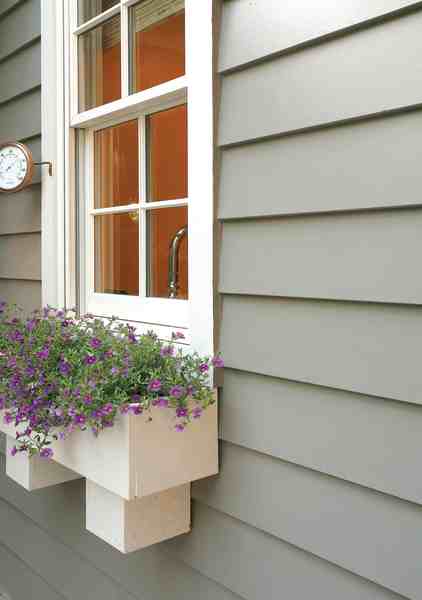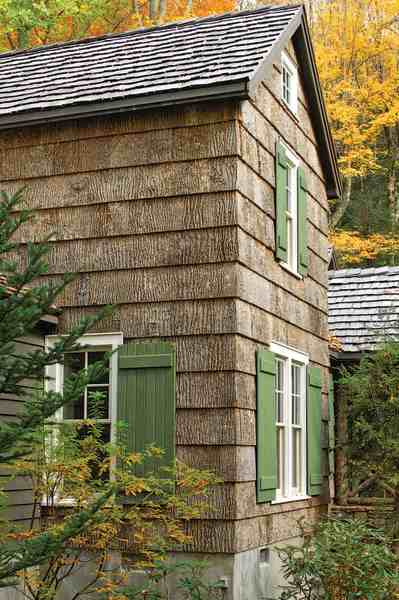A Short Course on Cladding: Part 1 can be found here and Part 2 can be found here.
Kinds of Cuts
The best “cut” for both clapboards and shingles is vertical grain. Vertical grain (or quarter-sawn) wood is cut so that the growth rings are vertical to the face of the board or shingle, producing a strong, dimensionally stable grain pattern. The next best is flat- (or plain-) sawn, which is cut straight through the tree, producing siding or shingles that show a repeating pattern of arches in the grain. If the siding you want is unusual, such as channel siding, your only option may be a flat-sawn product. Flat-sawn boards tend to cup and warp more quickly than vertical grain, so it’s a good idea to opt for pre-staining or -finishing.
Stone CladdingStone veneers have exploded as a cladding material in recent years. The most authentic are cut from real stone. They present a natural face on the surface, but are typically only 1″ to 2″ deep, so they’re much lighter and easier to install than whole stone. They can be used to reface a foundation or clad an entire wall. Stone cladding also comes in depths of 4″ to 5″, suitable for facing three-dimensional features that require the appearance of depth, like porch piers or a tower.
Quality stone veneers are cut and color-mixed in patterns that recall high-end period façades, from round river-rock foundations to more formal cuts like ashlar, to fieldstone that retains a bit of lichen. Since in most cases the installation isn’t structural, veneers install with an elastomeric thin-set specially formulated for the depth and weight of the material.
Alternative Cladding Materials
First there was engineered flooring and synthetic millwork. Could engineered siding be far behind? Made of wood strands coated with resin binders and compressed for strength, proprietary products like Collins’ TruWood are available in virtually any cladding style imaginable, from lap siding to fancy-cut shingles. Easy to install and pest and weather resistant, they’re embossed to resemble wood—at least from a distance—and are considered a “green” material. Although several come with a 30-year warranty, the product is so new that the jury is still out on how well they’ll last.

Another material with significant advantages over wood is fiber-cement siding, which comes in both siding and shingles (often called shakes, because they’re typically ½” thick). Although it won’t warp and is pest and fire resistant, the knock on fiber cement is that it reads as “flat” because it doesn’t have as much relief as wood lap siding. Manufacturers have addressed that by introducing products with wood-textured surfaces, some with a beaded edge.
James Hardie’s top-of-the-line Artisan Collection goes further. The boards are 5⁄8″ thick, so they’re capable of throwing deep shadow lines. Exposures are versatile, too: from 4″ to 7″, hitting the sweet spot for eras from the early 1800s to well into the 20th century. Although the appearance is similar to clapboard, Artisan Collection boards actually fit together with a tongue-and-groove interlock.

On the other side of the spectrum, the growing trend for rustic dwellings from Great Camps to cabins has led to the rejuvenation of bark siding. Options include both natural bark peeled straight from the log and synthetic bark, a realistic looking product that’s both insect and weather resistant and has a high R-value for energy savings.
Siding Cuts
Bevel or lap siding is just the most familiar kind of siding found on old houses. Many types interlock and install with butt joints, forming a tight joint that’s not dependent on expert cutting skills by the installer.







